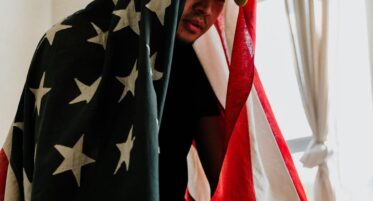
Prompt Images
We all have our travel bucket lists, the places that have us scrolling through image after image on Google, fantasizing about what it would be like to visit them, to relax on white sand beaches, stand in the shadow of the Parthenon, or walk the streets of Tokyo.
As an aficionado for stories in all their forms, my travel imagingings have taken me beyond the real and into the fictional. Although stories give us the opportunity to picture ourselves in places that we may never see, I can’t be the only one who has wished that I could travel to them beyond the confines of the page or screen.
From books, to television, to movies, here are the top places that have made my fictional travel bucket list.
The AFC Richmond Locker Room
Generally, places reeking of sweat and filled with loud cursing wouldn’t rank high on my list of places to visit. But, when it comes to Ted Lasso’s AFC Richmond Locker Room, I’ll make an exception.
To be honest, there are few places in the Ted Lasso universe I wouldn’t want to visit一except maybe West Ham United一but as the central location of many storylines, the Greyhounds’ locker room is special, offering moments of great comedy, heartbreak, and inspiration. In a show with so much heart, the locker room is its beat.
Nowhere else on the show can you see the characters coming together to hilariously discuss a cursed kit room, mourn a career-ending injury, pump each other up by giving out chic haircuts, or rally to believe.
I mean, did I also pick this location because of the high likelihood of a Roy Kent sighting? Obviously, but also because I’d be sure to hear one of Ted’s noteworthy pep talks, which would send me on my way with a whole lot of hope.
The Burrow
Harry Potter is rife with memorable locations一Hogwarts, Privet Drive, Diagon Alley, Hogsmeade, the Dark Forest, and the Horcrux Cave一each in its own way spectacularly grand and enticing, easily capturing our imagination and wonder. So, it’s ironic that my favorite location in the series is arguably one of the most simple: The Burrow, the cozy abode where the Weasley family resides.
The draw of the Burrow didn’t only come from the self-knitting scarves, self-washing pots, or flying cars, but the controlled chaos of the Weasley’s family life within it. Who didn’t love reading about the twins’ banter and hijinks? Or Mr. Weasley’s obsession with all aspects of Muggle life? Or Mrs. Weasley’s motherly love for a boy who had lost his own? Status, blood, and money didn’t matter at the Burrow, just character. As so many locations within the Harry Potter world lost their golden aura of childhood with each book and movie, for the most part, The Burrow kept its sheen intact, remaining that place to return to, the home where the conjured lights were always burning.
Of course, Harry Potter is not without its controversy unfortunately and it’s not difficult to see why, for many, the story has, pardon my cliché, lost some of its magic. Yet, somehow, 20 years later, that feeling of warmth and comfort I first felt when reading and seeing The Burrow as a child has not changed. While my thoughts about J.K. Rowling have shifted, The Burrow remains a place where all are welcome and those without family can find one, and that sounds pretty lovely to me.
Camp Half-Blood
I discovered the Percy Jackson & The Olympians series when I was an adolescent deep into my Harry Potter obsession. So, it was no surprise that I quickly became hooked on the series that shares many similar plot points. Both follow an 11-year-old boy who learns he has special powers and he is taken to a special school (or camp) to learn how to hone his powers so he is ready when, as prophesied, he has to save the world. Over the course of his multi-year journey, he is accompanied by his genius best friend and sidekick, and guided by the sage leader overseeing the school/camp.
Despite this, it was the differences that made me love Percy Jackson. Unlike in Harry Potter where anything less than pure blood had negative connotation, at Camp Half-Blood, it was embraced by all. In Percy’s universe, all the Greek Gods (and later Roman Gods) had children with mortals, their offspring a half-God, half-human hybrid. The kids who were lucky to not be hunted to their deaths found safety at Camp Half-Blood, and the realization that they were not alone in a life they had so often felt othered.
Readers like me found an education in all things mythology at Camp Half-Blood. Until reading the books, I didn’t realize how deeply the Greek Gods permeated our culture thousands of years after they first appeared, referenced everywhere from Prometheus in Rockefeller Center to the NASA Apollo missions. I also didn’t realize that the Greek Gods were extremely flawed─selfish and cruel─but somehow that made them more relatable to me, more human, and less lofty than gods of religions practiced today.
Just as Camp Half-Blood welcomed kids for the summer to learn and to take a break from everyday life, it offered readers the same. Although I have aged out of summer camp, I’d gladly sign myself up to go if given the chance.
The West Wing’s White House
In a time where our political landscape is more akin to a political hellscape, sometimes (most of the time) I find myself wanting to escape, not to a world that is simpler per se, but less contentious, more hopeful, more sensible, and more willing to compromise. Enter The West Wing.
Whereas our real-world politicians stereotypically come across as self-absorbed and caring more about advancing their own agenda rather than their constituents’, this was not the case in Bartlett Administration. In Aaron Sorkin’s version of the White House, the staff were the epitome of public servants, doing their best to give America the best. Did it always work? No, they had their pitfalls and setbacks, their tragedies and travails. But, rather than sinking into the mud and slinging it as happens so much now, they returned to work, their witty, fast-paced dialogue always in tow.
When I first watched The West Wing, I wanted to believe that it was actually how politics and government operated. Alas, it was far from realistic. All the same, the show still provides a welcome reprieve from what is, and an hopeful view of what could be.
Oliva Pope’s closet
Television and film have offered us plenty of beautiful fashion moments to lose ourselves in. One only has to watch a montage of Ugly Betty, The Devil Wears Prada, or Sex and the City to be captivated by the flurry of color and style. Yet, for me, it is the closet of Scandal’s Olivia Pope, teeming with neutrals and crisp lines that I’d like to travel to and steal from.
Over the course of the series, as Olivia Pope veered from savior to villain and back again, her fashion always was the hero of the story. From her chic handbags, to her long, classy belted coats, to her white silk dress finished with a gold glitter bodice, Olivia never went anywhere without looking like a million bucks, which is probably what her clients had to pay her to handle all their scandals. Not only is she personally responsible for nearly causing the president to launch a war on her behalf, but also for making me obsessed with trench coats, capes, and caped trench coats.
Safe to say, when it came to the fashion game, it was truly Olivia Pope’s world, and I would happily live in it.
The Apartment from Rear Window
I can hear you now: Why would you want to visit the apartment from Rear Window? The neighbor is literally a murderer.
That’s a fair question, to which I have a simple answer: some neighborhoods are so aesthetically pleasing that they are worth risking homicide.
James Stewart’s apartment was one of many that overlook a shared courtyard in New York City. Sounds of life poured from the dozen or so residences: conversations between couples; musicians plunking away at the piano, trying to write a masterpiece; dancers pirouetting to a show tune; children and dogs running around, their barks and shrieks of delight lost in each other. Yes, there was a killer in their midst, but if you can overlook that small fact and focus on the thrum of humanity, the cutesy apartments, Grace Kelly’s immaculate wardrobe, and 1950s’ rent rates, you’d want to be its next tenant too.



